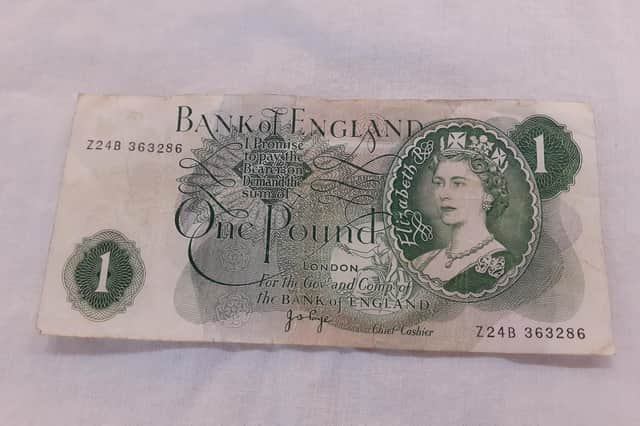How to use money to make money in the world of antiques...


Are you flashing the cash less often these days? Thanks to contactless purchases, internet shopping and banking, and yes, the pandemic, fewer than 22% of purchases are made with cash, and dropping.
Coming on the 225th anniversary of the Bank of England issuing the first one and two pound notes in 1797, it got me thinking, are we witnessing the recalibration of paper money from everyday object to collector’s item?
Advertisement
Hide AdAdvertisement
Hide AdFor any budding notaphilists (collectors of paper money), the first recorded use of paper money was in China in the seventh century. Nearly a thousand years later, 16th century European goldsmith-bankers started to issue paper receipts for deposits and loans.
In 1694 the Bank of England was established to raise money for the war against France. Combined with the fragility of the medium, the scarcity of these early handwritten notes (which could be for any amount, like £62 or £84) makes them worth almost a King’s ransom today.
The move towards fixed denomination notes started in the 18th century, with lower denomination notes gradually added, down to £2 and £1 in 1797. The first fully printed notes appeared in 1853.
Notaphily is often overshadowed by its cousin, numismatics (coin collecting). Less durable, paper notes also lack coins’ inherent value. However they are a fascinating insight into history and often attractive pieces in their own right.
Advertisement
Hide AdAdvertisement
Hide AdCollectors often specialise in notes from a specific period, country, decorative themes (famous people, birds, buildings) or commemorative issues.
Pound notes, which I was shocked to find went out of circulation in 1988, make an interesting and inexpensive place to start and learn about criteria such as watermarks, signatures, and plate, series and serial numbers. This example is one of a small hoard usually to be found in the centre, priced from £4.
Even today’s polymer banknotes can still be collectable. Five of the first polymer £5 notes, released in 2016, had a tiny portrait of Jane Austen engraved on them by micro-artist Graham Short, four of which have been found. They were initially expected to be worth £50,000 each, but the most any of them have ever sold for is £5,000 at a charity auction.
However I cannot see them doing anything but accruing in value, so keep your eyes peeled for the missing fifth issue, it could certainly make a ‘noteworthy’ investment.